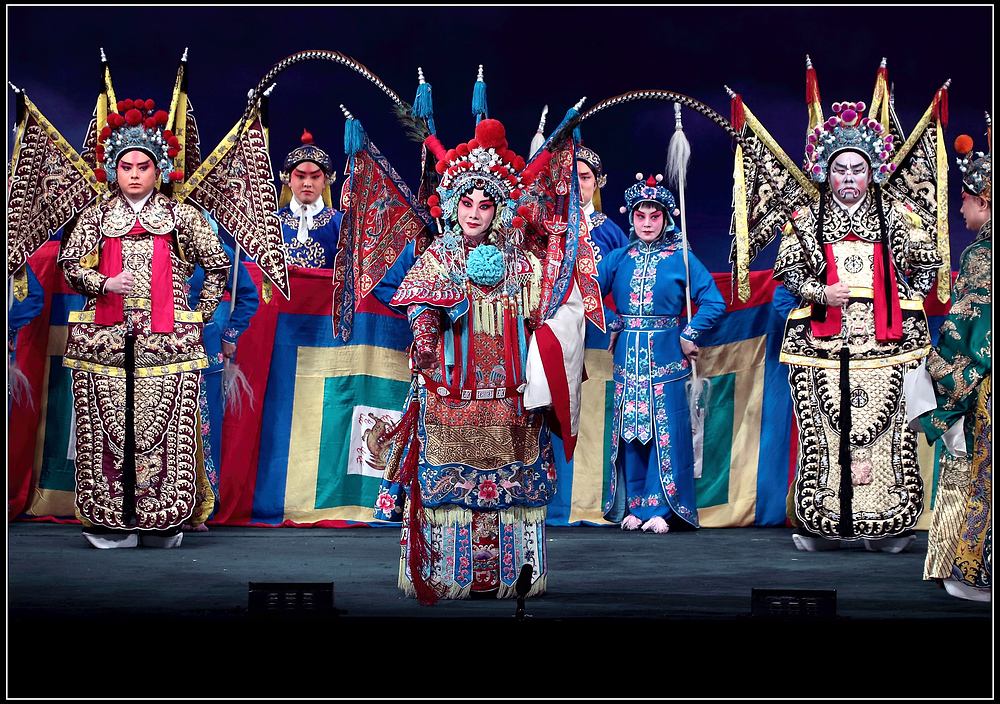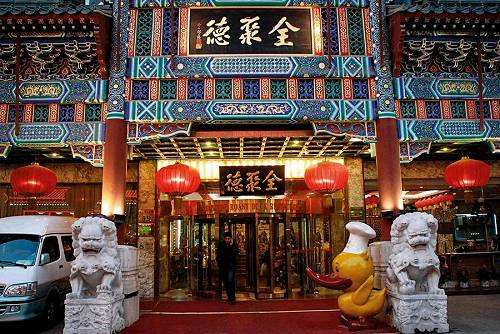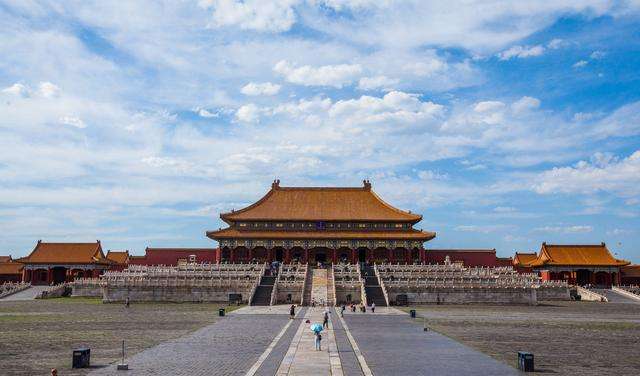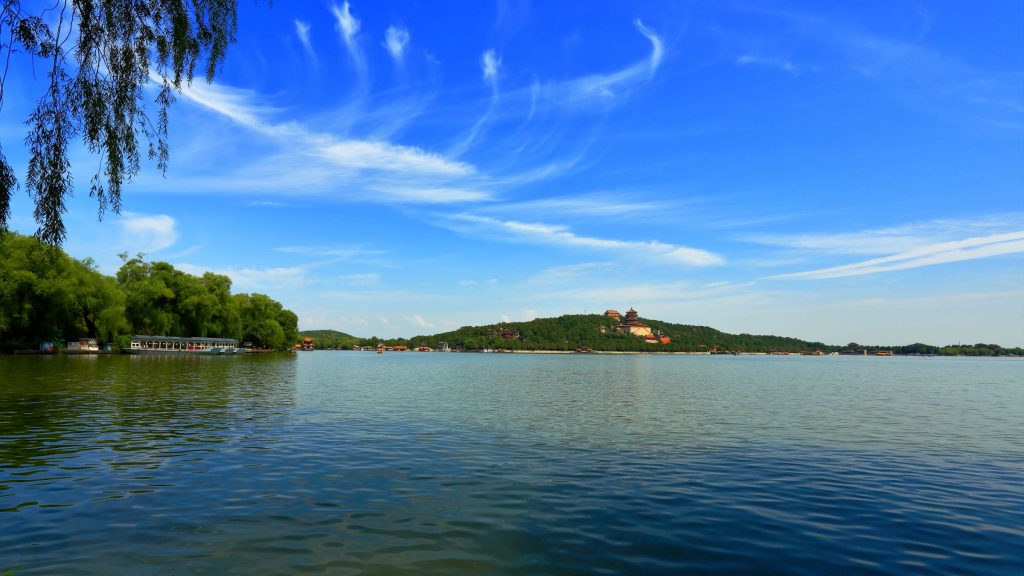Cultural Relics
7 min readBeijing is not merely a national political and economic center but also a land of cultural treasures among which are the famous Peking opera, Quanjude roast duck and Tongrentang traditional Chinese medicine.
Peking opera, one of different types of dramas prevailing in today’s China, has a history of more than two hundred years and is honored as the quintessence of the Chinese culture. During the reign of Emperor Qianlong of the Qing dynasty, four drama performing troops from Anhui province came to Beijing and acted with performers from Hubei. When they performed, they incorporated some melodies and acts from other types of dramas such as Kunqu and Qinqiang, gradually giving shape to today’s Peking opera which was once known for many different names such as Luantan, Huangdiao, Jinghuang, Jing Erhuang, Erhuang, the grand drama, Pingju, Jingxi. There are four main types of characters including Sheng (the main male role in Peking opera), Dan (any female role), Jing (a painted face male role), and Chou (a male clown role). In Peking opera, the performers employ the skills of singing, speaking, pantomiming and fight miming to present a lively story to the audience. After more than two hundred years of development, now there are more than one thousand traditional plays. Among the famous are The Compromise between the General and the Chancellor,A Gathering of Heroes, An Empty City, The Drunken Beauty, Picking up a Jade Bracelet, The Fisherman’s Revenge, etc. Now the unique ways of painting the performers’ faces have become one type of national art.

Face paintings of different characters in the Chinese local operas Quanjude is a time-honored food brand. Created during the reign of Emperor Tongzhi of the Qing dynasty and having stood the test of more than 140 years, now the brand enjoys a high reputation both in and out of China.
The Quanjude Roast Duck Restaurant situated at Qianmen is where the brand was created and is honored as “the best restaurant”. Back in the Qing dynasty, the restaurant hired cooks of fame and started to roast ducks by hanging them in a furnace as was done in the imperial kitchen. This brought the brand instant success and fame among ordinary people. After a hundred years of improvement, now Quanjude roast duck, tempting both in color and taste, arouses the appetite of gastronomes from all over the country. In addition, more than a hundred traditional dishes made from the different parts of ducks are spoken highly of as well.

Tongrentang traditional Chinese medicine is another brand created in the reign of Emperor Kangxi. Born into a family of doctors, the founder of the brand opened a medicine workshop at today’s Qianmen in a bid to provide patients with high-quality medicine. Quality was always the number one priority in his workshop. No matter how complicated a medicine making process was, any tiny step wouldn’t be omitted; no matter how expensive a raw medicinal material was, the amount required was precise.
Thus, the brand soon established a high reputation and became a medicine provider for the Royal Drugstore in the Imperial Palace of the Qing dynasty.A even more creditable act is that the workshop constantly gave away cotton-padded clothes and medicine to help the ordinary people.
Jingtailan or Cloisonne, also known as enamel, is one type of artistic handicraft made of both porcelain and copper. Originated in the Yuan dynasty, Jingtailan making in Beijing has a history of more than five hundred years. The handicraft is named Jingtailan(“Lan”in Chinese literally means “blue”) because the glaze used is mainly of the peacock blue and the sapphire blue. The process of producing a cloisonne is a combination of bronze ware making, porcelain making, painting and carving. Though most of the earliest cloisonne products are household utensils, currently there are a wide variety of products, ranging from screens to desks and chairs, from chopsticks to earrings, all gracefully designed and colorfully glazed.
A Cloisonne handicraft
Artistic handicraft of a strong Chinese flavor, Jingtailan products can be used for artistic appreciation or for daily use. They are also a good choice as gifts for friends and relatives.
3. Historical Relics
Beijing,a land with time-honored history and culture,a land decorated by numerous man-made landscapes and historical relics, is a grand and glamorous museum of Chinese history and culture.
Imperial Palace

The Imperial Palace, also known as the Forbidden City was where the emperors of Ming and Qing dynasties worked and lived. It is the biggest and most complete one among a1l the ancient building complexes preserved until now in China. The Hall of Supreme Harmony, the Hall of Central Harmony and the Hall of Preserving Harmony were where the emperor handled state affairs while The Palace of Heavenly Purity, the Hall of Union and the Palace of Earthly Tranquility were the residences of the emperor. Built with wood, rested on the white marble stone, roofed with goldenglazed tiles and decorated with glittering paintings, all the palaces reveal stateliness of the emperor and the nobility of the royal family. Shrines such as Tai Miao(the Imperial Shrine of Family) and Sheji Tan (the Imperial Shrine of State) to the south of the Forbidden City are also of unique features. In 1988, the Imperial Palace was listed as “the World Cultural Heritage”by UNESCO.
Imperial Palace
Great Wall

Winding along more than six thousand kilometers, the Great Wall is a symbol of the Chinese nation and one of the man-made wonders in the world. Badaling Great Wall is the best preserved section of the Great Wall of the Ming dynasty. Built in conformity of the landform of the mountain which is more than 1,000 meters above the sea level, Badaling Great Wall is a proof to the architectural excellence of the ancient China.
Summer Palace

Situated northeast of Beijing, Summer Palace is the biggest and best preserved imperial garden. Covering an area of 293 hectares, the palace has three major scenic areas: the adminstrative area, the Longevity Hill and the Kunming Lake. The construction of the buildings were so designed that one may visit the Tower of the Buddhist Incense, the Hall of Moral Brilliance, the Hall of Dispelling Clouds, the Gate of Dispelling Clouds as well as the Archway of Bright Cloud and Jade House one by one downward the Longevity Hill until he reaches the 700-meter Long Corridor to have a perfect view of the rippling water of the Kunming Lake.
Longevity Hi11 and Kunming Lake in the Summer Palace The administrative area with the Hall of Benevolence and Longevity at the centre is where Empress Dowager Cixi and Emperor Guangxu held court and received foreign guests. Lying behind the Hall of Benevolence and Longevity are three large siheyuans(Siheyuan is a traditional residential compound in north China with rooms on four sides of a courtyard.): Hall of Joyful Longevity, Hall of Jade Billow and YinyunHa11. They were the residences for Empress Dowager Cixi, Emperor Guangxu and his concubines respectively.
Tanzhe Temple
Located on the Tanzhe Hill in the Mentougou district, Tanzhe Temple (also known as Pool and Oak Temple) is the most ancient Buddhist temple in Beijing. First built in the Jin dynasty (265-420), now the temple is home to dozens of towers built in Jin (1115-1234), Yuan, Ming and Qing dynasties as well as the tombs of abbots and Buddhist monks of noble character and high prestige including Emperor Kublai Khan’s daughter Master Miaoyan. On the east side of the Hall of the Three Saints theregrows a maidenhair tree thirty meters high and six or seven meters wide at thediameter of its main trunk. The tree is named as Emperor Tree and is said to be planted in the Liao dynasty. On the west side of the hall, there grows another tree.

Legend has it that every time an emperor was born a branch would grow. Thus, peoplenamed it Emperor-accompanying Tree. Most of the buildings in the temple were first built in the Ming dynasty or the Qing.
Tanzhe Temple, together with Yunshan Temple, Tian’ ning Temple, the exotic Zhenjue Temple and many others makes Beijing a city of religious diversity, while princes’ mansions, the Ming Tombs and numerous old residences of celebrities make the city a land of historical legends.
Hutongs,a unique vista in today’s Beijing, first appeared in the Yuan dynasty Back in those days, Beijing local residents lived among the hutongs orderly built around the Forbidden City, forming a unique civilian culture.
Along hutongs are lined with siheyuans. They are square residential compounds with houses built on four sides of a courtyard. The ordinary people’s dwellings weremainly built with wood and in a simple yet strict layout. Which room a family member should live in was decided by his position on the family tree.
In addition to Beijing roast duck, sweet-sour plum juice, Beijing noodles served with sauce and persimmon are also among the delicious traditional local food. Sweet-sour plum juice was first made as a summer drink for the emperor and has become the ordinary people’s favorite since it went out of the imperial city. Beijing noodles wouldn’t be so appetizing without the delicious yet not greasy sauce which is made by frying the bean source in a mixture of fried diced pork meat, shallot, ginger, and garlic. Autumn is the harvest time for persimmon which tastes sweet and can beeaten in several different ways. For instance, persimmon could be dried or put into porridge.








